dotgrid
- introduction
- dotbit
- Distributions
- tutorial
- line
- arcs
- bezier
- close
- line cap
- line join
- line thickness
- mirror
- fill
- color
- other functions
- drawing complex shapes
- visual
- shortcut quick list
- License
- Make a pull request
introduction
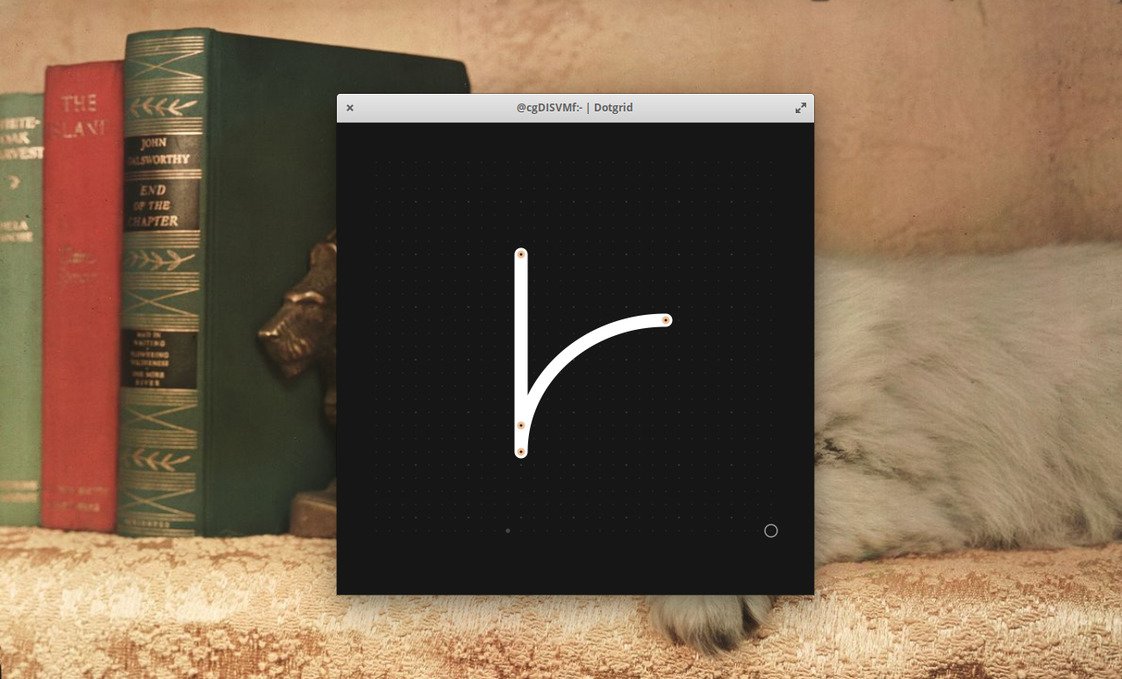
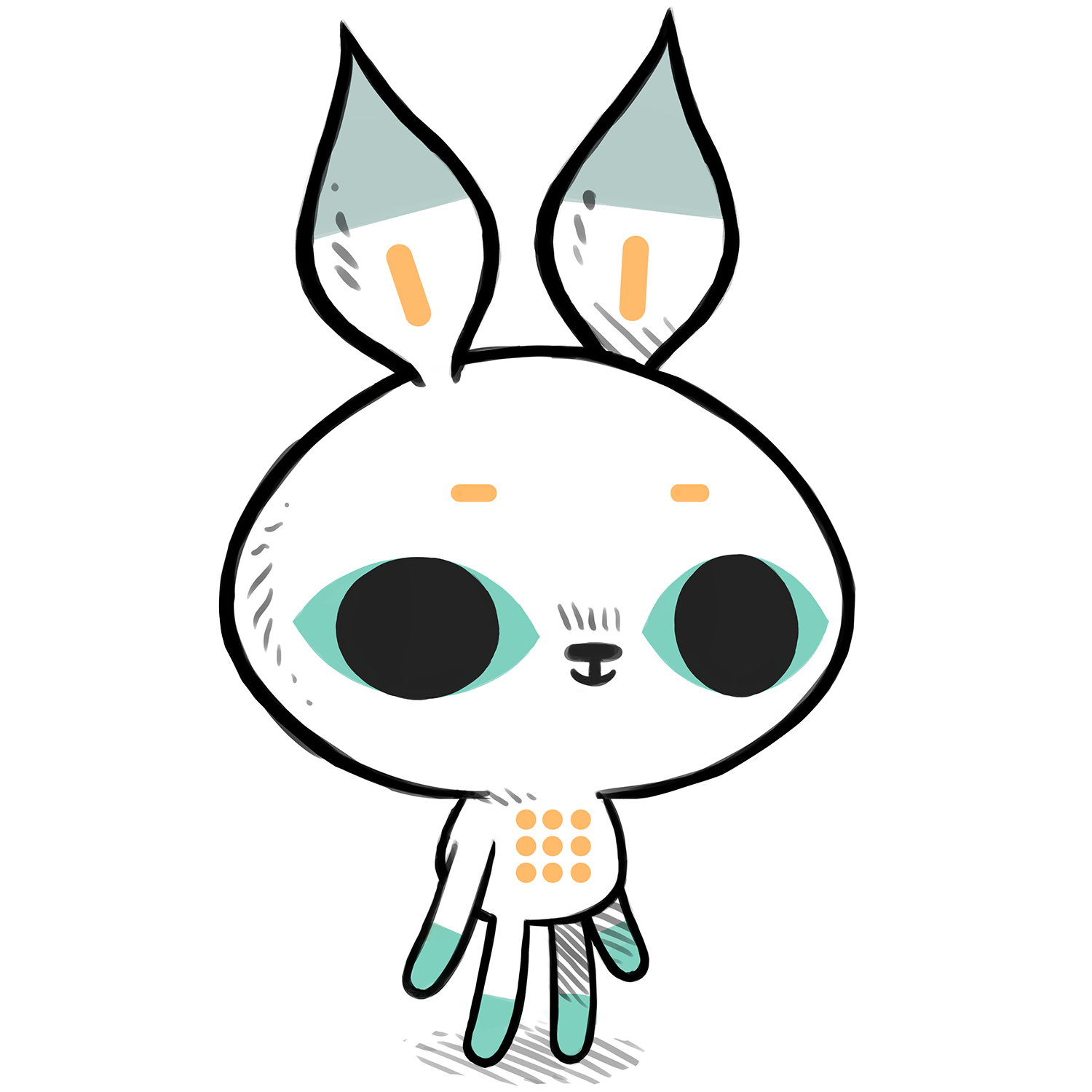
Dotgrid is a grid-based vector drawing software designed to create logos, icons and type. It supports layers, the full SVG specs and additional effects such as mirroring and radial drawing. Dotgrid exports to both PNG and SVG files.
The application was initially created for internal use, and later made available as a free and open source software. It was developed while in Tonga and in New Zealand in 2017.
Download Dotgrid
tutorial
Upon opening the application, you are presented with a dotted grid, which can be made bigger, or smaller, by resizing the window. A list of tools, represented as icons, sits on the bottom of the window.
Clicking anywhere on the grid will add a white dot to the grid, and by adding additional dots to the grid, notice how the available tool icons become lighter, that means you have enough points to use them, their icon will darken again when you don't.
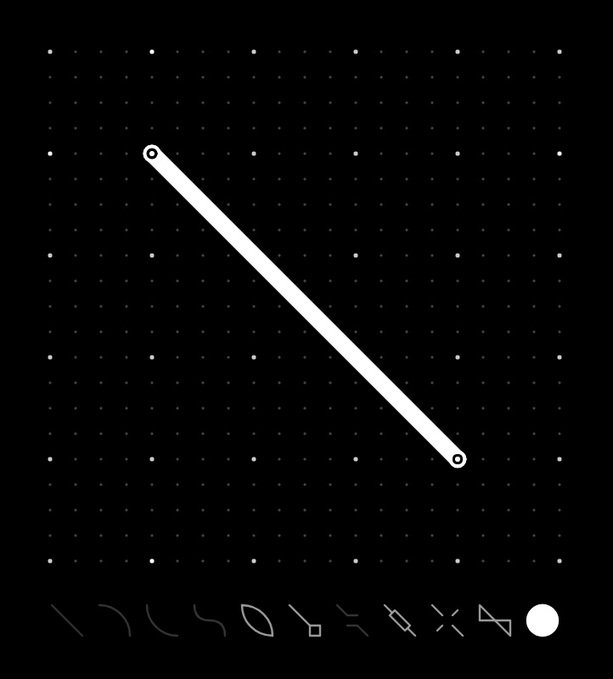
line
Add two points on the grid. Selecting Line(the diagonal line icon) will link the two points together with a straight white line.
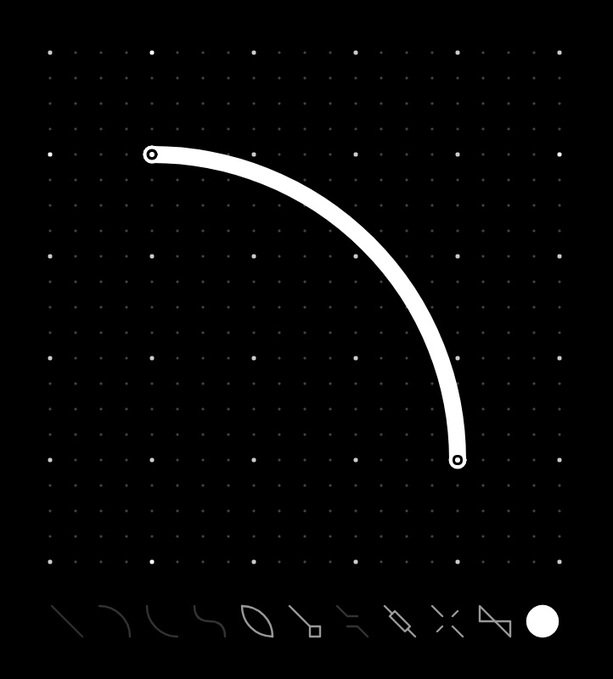
arcs
Press backspace to clear your last segment, and draw another two sets of points, but this time, click on Arc. This will connect your two points with a curve.
If you undo your last move with ⌘ + z, connect your two points again by pressing Arc Reverse(the inverse curve icon). This creates an inverted curve.
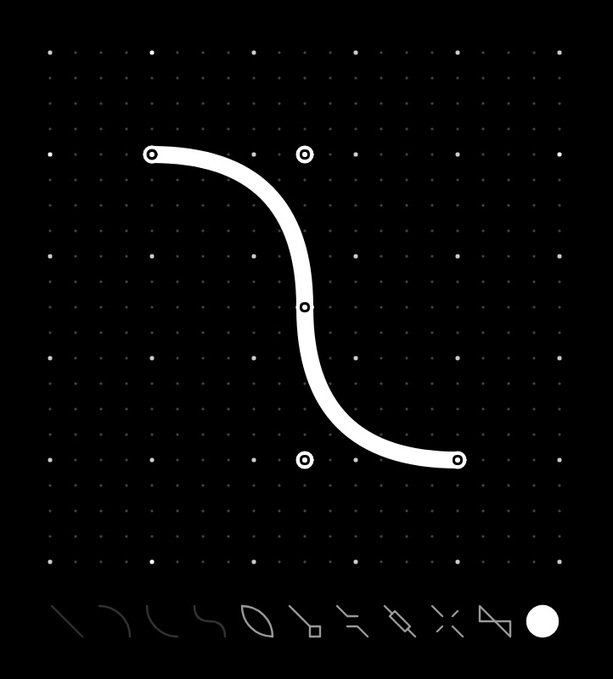
bezier
Place two dots on your grid, with a third between them but offset, then press Bezier(the S icon). A white dot will appear separate from the main line, this is a handle that you can use to create your curve. Move the handle (or third point) to change its shape. Example below has more points, and therefore more handles to create complex shapes.
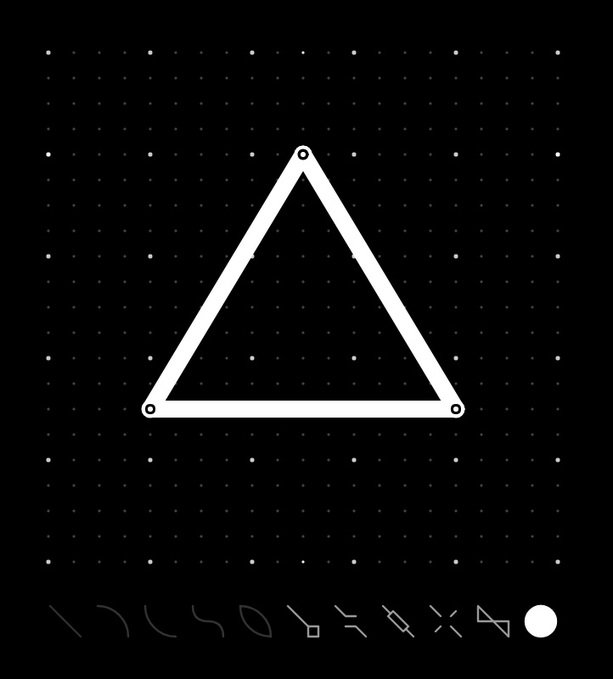
close
Create 3 points on the grid, press Line, then press Close (the flat oval icon), your shape will complete itself. If you don't close a shape, you won't be able to fill it, and it will create problems when using Line cap.
line cap
Make a triangle on the grid using 3 points, select the Line to connect them, then, select Linecap (line with a diamond shape at the end). By default, you get a 'round' line cap, you can cycle through the different types by pressing the linecap icon again. You have 3 linecap styles to choose from:
- Round A rounded end cap is added to the end of the line
- Butt A flat edge is added to the end of the line
- Square A square end is added to the end of the line
line join
Add 3 points to the grid to make a triangle, Close the shape and then select Line Join (the icon with two 'hockey sticks' meeting each other).
Line Join changes the look of the corners of your closed shapes, like Line Cap, you can choose from the 3 styles: Round, butt and square. You can cycle between the 3 by pressing on the icon repeatedly. The shortcut to use it is:
line thickness
You can increase or decrease the thickness of your line anytime, using Line Thickness (the line with rectangle over it). The shortcuts to alter the line thickness are:
- Thicker }
- Thinner {
- Thicker +5 ]
- Thinner -5 [
mirror
Drawing a shape, and select Mirror (the icon with 4 lines that aren't crossing), will mirror the image horizontally on the canvas. Pressing on it again, will mirror it vertically, doing it again, mirrors it 180° from the center.
You can tell which sort of mirroring you've got, by seeing the changes in the icon on the menu. To remove the effect, click on the icon until it returns to its original state, with the lines not crossing.
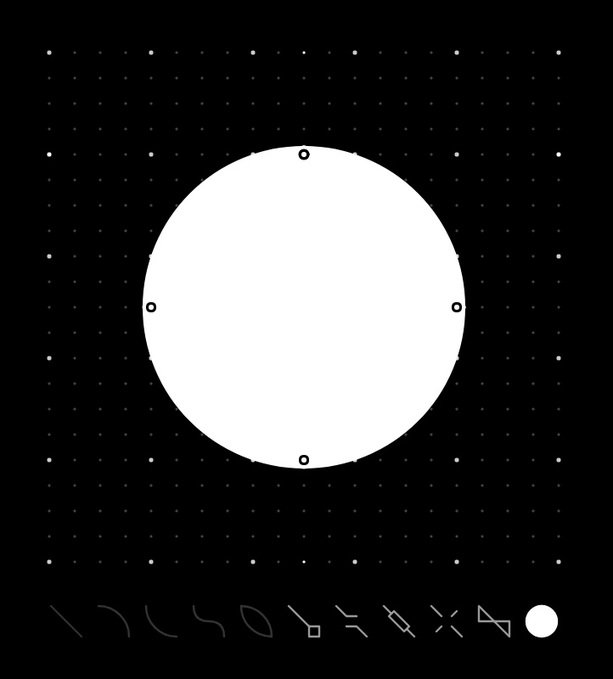
fill
Drawing a closed shape, and selecting Fill (icon resembling a twisted rectangle) will fill it with a single colour.
Pressing on the icon again, will remove the fill.
Know that if you have other closed shapes on your canvas, this function will fill them all. The shortcut to use it is r.
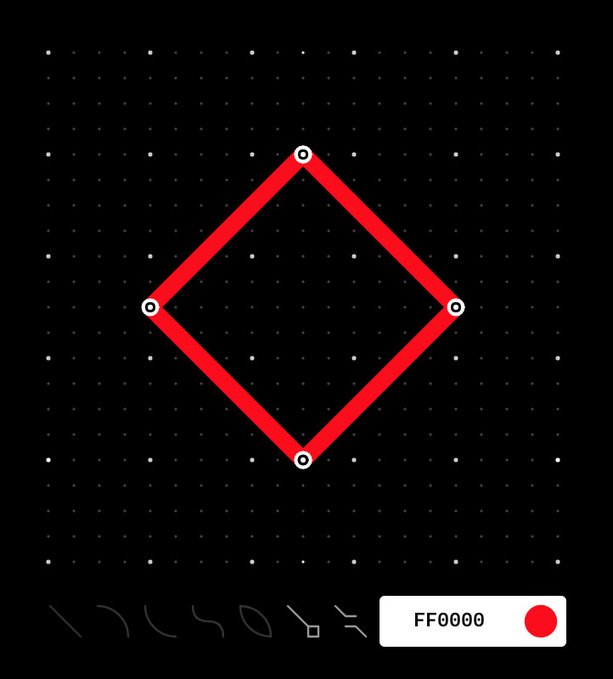
color
It's possible to change the color of any shape with the color tool.
To change it, click on the white circle on the lower right-hand side and enter a hex color code.
For example: FF0000
other functions
Move points. You can move any point, any time, by selecting it with your cursor and moving it around. If you choose to move a point that is part of an existing shape, it will warp the shape.
Grid on/off. You can toggle the grid, on and off, to better view a design using the shortcut h.
Layers - You can toggle between each layer by using the shortcuts:
- ⌘ 1 for Layer 1
- ⌘ 2 for Layer 2
- ⌘ 3 for Layer 3
Dots will appear over the shapes of the layer that is selected. Having multiple layers, enables you to have designs of varying colour and complexity.
drawing complex shapes
To create a circle, draw 5 points on the grid, with the 5th returning to the starting point, then press Arc. You will now have a circle. Select Close to close the shape. The roundness of your circle will depend on where you placed your points. You can always adjust, by selecting the points individually and moving them around.
When making complex shapes, mind how you build your shapes and how the lines will connect, the order will affect your design.
visual
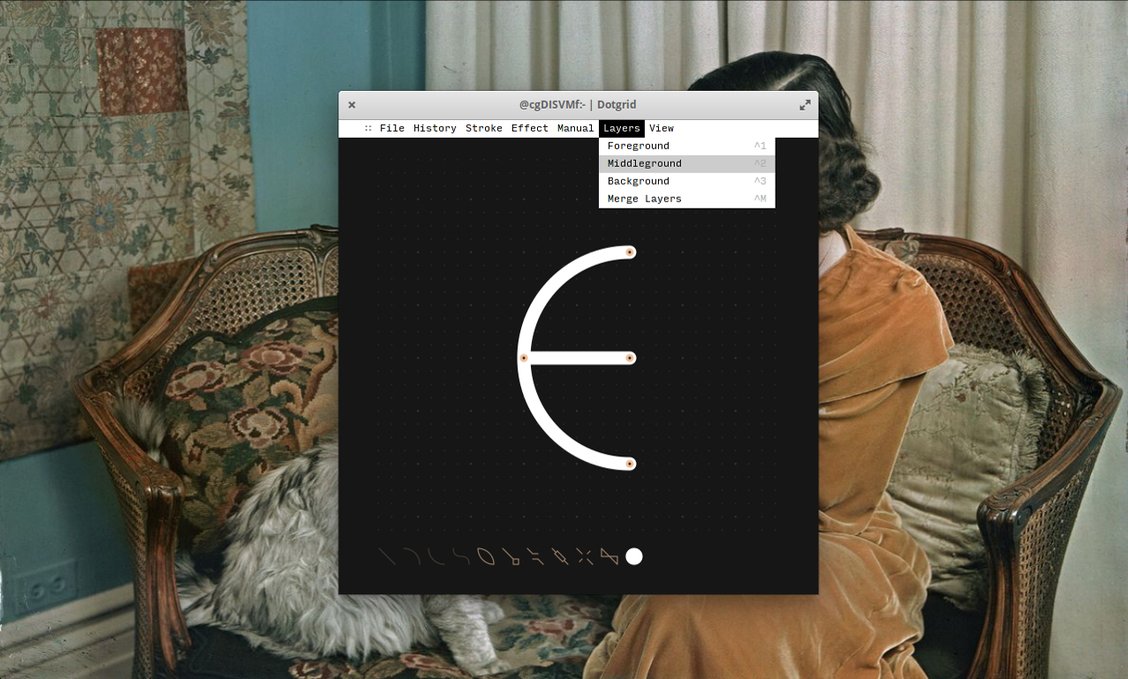
You can change the look and colour of Dotgrid. To do this, download themes from our itch.io page. You can view the colour palettes of each theme in the preview, once you find something you like, drag the file (.svg file) onto Dotgrid. The colours will change instantly.
These themes are part of the Ecosystem Theme, which means that you can apply a theme to any supported app (Left, Donsol, Orca and Ronin).
You can also create your own themes.
shortcut quick list
Stroke types
- aLine
- sArc
- dArc Rev
- fBezier
- zClose
Stroke effects
- qLine cap
- wLine join
- eMirror
- rFill
- }Thicker
- {Thinner
- ]Thicker +5
- [Thinner -5
Dotgrid can be operated with the keyboard
- enterAdd point
- ↑Move up
- ↓Move down
- →Move right
- ←Move left
- shift + backspaceRemove point
- backspaceRemove segment
Toggling between layers
- ⌘ + 1Foreground
- ⌘ + 2Middle
- ⌘ + 3Background
Other
- gColor picker
- hToggle grid on/off
- ⌘ + sSave
- ⌘ + eExport Vector
- ⌘ + shift + eExport Image
- ⌘ + wRevert
- ⌘ + nNew
- ⌘ + oOpen
- ⌘ + zUndo
- ⌘ + shift + zRedo
license
The license applies to all the documented projects, the projects themselves and their assets. The source code of this website and our apps are under the MIT License, but the assets and text content of this website and of our apps are under the BY-NC-SA4.0 License. We are happy to pass knowledge, and that others can learn from our projects, improve on them, or make them into something else that is useful.
DO NOT resell or mint our work, doing so is very lazy, and disrespectful to us.
You can find our more recent projects on Sourcehut.
pull request
See the Github and Sourcehut repositories. Pull Requests are welcome, but please read our design philosophy first.